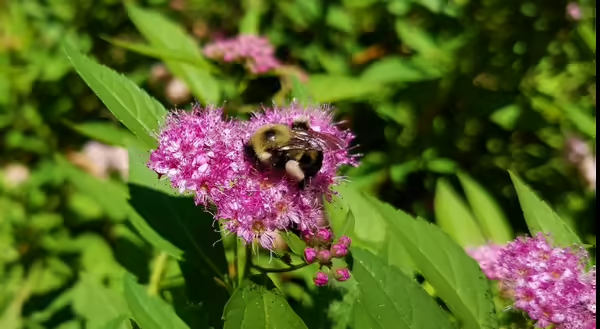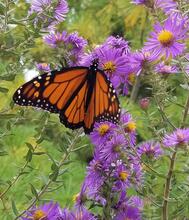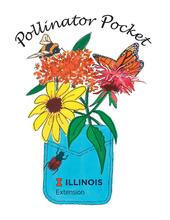
This week, June 21-27, 2021, is National Pollinator’s Week, which is a time set aside by congress to honor and appreciate the amazing process of pollination. Governors in all 50 states have also acknowledged this special week by making their own proclamations to recognize pollinators in their respective states.
What is pollination?
Pollination is the process by which pollen is transferred between flower parts to allow fertilization and subsequent plant reproduction. Numerous plants we eat rely on insects and other pollinators for this vital process of pollination.
It has been estimated that flowering plants and their associated pollinators are responsible for 1 out of every 4 mouthfuls of food and beverage in the U.S.
Although 99% of North American pollinators are insects, and the majority of those are bees, the list of pollinating species is long, including: butterflies, moths, beetles, hummingbirds, flies and wasps.
Both directly and indirectly, pollinators are also crucial for the production of dyes, medicines and some fibers. All in all, pollinators are an integral part of our nation’s economy which is often undervalued or overlooked.
When you consider pollinator’s role in our native ecosystems, they are vastly important as well. Similar to the way they sustain human food systems, pollinators perpetuate native plant communities that provide food and shelter for wildlife.
Pollinators and Plants
Flowering plants produce nectar and pollen which both serve as the primary food sources for pollinators. However, during other stages of their life cycle, many pollinators have very specific plant needs.
The greatest example of these intricately evolved relationships is that of the monarch butterfly (Danaus plexippus) and milkweed plants (Asclepias spp.). During the monarch’s caterpillar stage, it feeds exclusively on milkweeds. Therefore, healthy populations of milkweed are needed to perpetuate the species. In recent decades, weed control techniques have advanced rapidly to a point where we as humans are very good at controlling agricultural weeds, such as milkweed. As a result of extensive weed suppression (combined with habitat loss), milkweed populations have plummeted. Consequently, monarch populations have also drastically declined.
The monarch is just one example of these very specific floral and faunal associations. Many other pollinating insects have a similar dependency on a very specific plant species or groups of species. For a variety of reasons, with loss of natural areas and habitat topping the list, pollinator populations across the U.S. are suffering similar dramatic declines.
What can you do?
As gardeners and homeowners, there are small things we can do that can have a big impact when multiplied across all 50 states.
Since habitat loss is a major factor in pollinator decline, there are many plants we can add to our gardens and yards that will benefit pollinators. By simply selecting native plants for landscaping, we can add significant habitat.
Although many exotic plants, such as butterfly bush (Buddleja davidii), attract a ton of butterflies who benefit from the nectar, these plants may not sustain other portions of insect lifecycles that native plants support. In addition, native flora is well adapted to our climate, often needing less watering and less maintenance than their exotic cousins.
Plant a Pollinator Pocket
If you are interested in promoting pollinator habitat in your community, consider participation in the University of Illinois Extension’s Pollinator Pocket Program. Participants are asked to plant some area of their property with pollinator-friendly plants. These spaces can be as small as 4’x6’ or as large as many acres.
If you are wondering what fits the bill of “pollinator-friendly”, have no fear. Illinois Extension has pollinator pocket designs available at go.illinois.edu/pocket. They were developed to address a variety of sun and soil drainage conditions, so there is a design to fit any space in your yard.
Once you’ve planted your Pollinator Pocket, submit an application to Illinois Extension detailing your project and we’ll mail you a Pollinator Pocket sign to proudly display in your garden space. Not only will you feel great about doing your part to help pollinators, but neighbors might notice all your spectacular flowering plants and decide to follow suit.
Together, Pollinator Pockets across Illinois combine to create beauty and provide valuable floral resources for these vitally important, yet underappreciated fauna.

